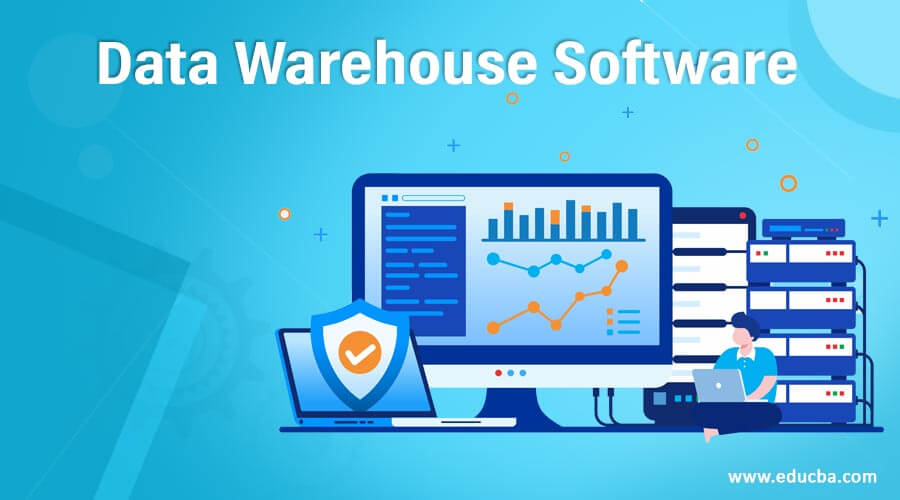
Introduction to Data Warehouse Software
A data center is a platform for the study of data rather than traditional transaction processing. A data warehouse acts as a bridge between operational data stores and facilitates composite data analytics. Warehouse slices of data – e.g. Detailed statistics, such as revenues or funding, are stored in a data mart in which quick access is given to a single department. Information collected from different data sources and loaded into the warehouse is optimized for a database to facilitate decision-making effectively. This can be grouped into tables, redundancy can be distilled and accuracy converted. Extract, Transform, and Load (ETL) are the mechanism by which this happens. The data is available for review and interpretation until properly organized. In this topic, we are going to learn about Data Warehouse Software.
List of Data Warehouse Software
Let’s see some Data Warehouse Software
1. Amazon Redshift
Amazon Redshift, a fast, fully managed petabyte-scale data storage service that simplifies and makes it economical to analyze all your data efficiently using your existing business intelligence systems. This is designed for data sets of several hundred gigabytes to one or more petabytes and costs less than $1000 per terabytes per annum, which is 10 times the cost of the most convenient storage solutions.
2. Snowflake
The cloud computing platform from Snowflake breaks down barriers that keep companies of all sizes from leaving their computing to the true value. Tens of thousands of customers adapt Snowflake to advance their companies, across all their business applications, beyond what is possible. Fast, safe, and managed access into their entire network of data, and a core architecture to support a wide range of data workloads, including a common platform for developing modern data applications, Snowflake provides a single, optimized platform to provide a cloud-built-only data storage facility. To fully leverage Snowflake’s capabilities, integrating it with snowflake ETL tools is essential for seamless data extraction, transformation, and loading processes.
3. IBM Db2
IBM IBM believes in revealing the data’s value rather than throwing it away. IBM Db2 We have a higher quality in our databases so that your data can be distributed wherever it is needed, adapted fluently to your evolving needs, and integrated with multiple platforms, languages, and workloads. IBM Db2 supports operating systems in Linux, Windows, and UNIX.
4. Pivotal Greenplum
The world’s first fully integrated, multi-cloud, massive parallel (MPP) data processing platform, Pivotal Greenplum, meets with advanced analytics and conventional business intelligence built upon the open-source Greenplum database. Pivotal Greenplum provides detailed and automated data analysis. Powered by one of the most advanced cost-based database optimizers in the world, Pivotal Greenplum offers unequaled analytical database output for large volumes of information.
5. IBM Netezza
Integrates a single device with petabyte scalability into a database, server, storage, and analytics. Fast Analytics Provides a highly effective, highly parallel framework that lets you gain insight and analyze very large volumes of information. Smart, effective queries Simplify research by consolidating all operations where the data resides in one location. Easy to install and maintain, simpler data management and research system. Simplified system Does not need tuning, indexing, or grouping of tables and needs minimum management.
6. Panoply
The first Smart Cloud Data Center in the world is Panoply. Panoply offers industry insight the fastest period by eliminating the creation and coding usually associated with data transformation, integration, and management. The patented AI technology of Panoply enriches, transforms, and optimizes complex data automatically and makes it easy to gain insight into them. The corporation is privately owned and funded by private firms including Intel Capital, Blumberg Capital, 500 entrepreneurs, and C5 Capital with offices in San Francisco and Tel Aviv.
7. Vertica
The Vertica Analytics Platform is designed for contemporary data-driven world scale and sophistication. We are aiming to provide speed, reach and efficiency in mission-critical analytics at less overall ownership than conventional systems by thousands of leading and data-driven businesses, Etsy, including Bank of America, Intuit, Facebook, Uber, and others. In combination with advanced analytics and machine learning, Vertica offers you the power of high-performance, massively parallel SQL processing engines, so that you can access your data without limit and sacrificing-accessible at a local level, in the clouds on Apache Hadoop, or as a hybrid model.
8. IBM InfoSphere
Better understanding and cleaning, tracking, transforming, and distributing results. Create faith in your data Clean, reliable, and timely data for warehouses and large-scale data projects and applications. Build a versatile management approach to help you adopt a data management plan to fulfill your organizational goals and develop business knowledge that satisfies the requirements in a specific way. Upgrade and simplify your systems enables the programs to be streamlined, obsolete resources eliminated and technology modernized as well as business processes to boost cost-efficiency.
Conclusion
In this article, we have seen Data warehouse software that helps to report and analysis of data, as well as plays an important role in business intelligence. We hope you will find this article helpful.
Recommended Articles
This is a guide to Data Warehouse Software. Here we discuss the list of Data Warehouse Software that helps to report and analysis of data. You may also have a look at the following articles to learn more –
